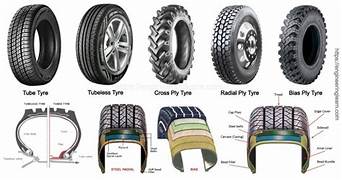Tires are an integral part of any vehicle, yet many of us don’t fully understand the terminology used when talking about them. With so much jargon and technical terms thrown around, it can be confusing to know which ones are important and how they affect our driving experience.
In this guide, we’ll break down the most common tire terminology and explain what each one means for your vehicle.
Tire Size
One of the first things you may notice when looking at tires is a series of numbers and letters printed on the sidewall. This is known as the tire size and it indicates the width, aspect ratio, construction type, wheel diameter, and load and speed ratings of the tire.
- Width: The first number in the tire size indicates the width of the tire in millimeters. This measurement is taken from one sidewall to the other and can range from as small as 135mm to over 400mm.
- Aspect Ratio: The aspect ratio, also known as profile or series, refers to the height of the tire’s sidewall as a percentage of its width. This ratio can range from 20 to 80, with lower numbers indicating a shorter sidewall and higher numbers indicating a taller sidewall.
- Construction Type: The letter following the aspect ratio indicates the construction type of the tire. “R” stands for radial, which is the most common type of tire construction today.
- Wheel Diameter: The two-digit number following the construction type indicates the diameter of the wheel that the tire is designed to fit on, measured in inches.
- Load and Speed Ratings: The final set of numbers and letters indicate the load index and speed rating of the tire. These ratings determine the maximum load capacity and speed at which a tire can safely operate.
Tread Patterns
The pattern of grooves and ridges on the surface of a tire is known as the tread pattern. It is designed to provide grip, stability, and water dispersion while driving. Different types of vehicles require different tread patterns for optimal performance.
- Symmetric: A symmetric tread pattern features continuous ribs or independent blocks on both sides of the tire, with a consistent pattern down the center. This type of tread is common on passenger vehicles and provides a smooth and quiet ride.
- Asymmetric: An asymmetric tread pattern has different tread patterns on the inner and outer sections of the tire. This allows for better handling and traction in both wet and dry conditions.
- Directional: A directional tread pattern features a continuous v-shaped pattern that is designed to channel water away from the tire for improved wet weather performance. These tires should only be mounted in one direction and cannot be rotated from side to side.
- Mud Terrain: A mud terrain tread pattern features large, deep treads with wide spacing to provide maximum traction on soft or uneven surfaces. These tires are commonly used on off-road vehicles and are not suitable for everyday driving.
Tread Wear
Tread wear is a measurement of how much the tread on a tire has worn down over time. The more worn down the tread, the less grip and traction the tire will have. This can lead to longer stopping distances and decreased handling ability.
- Treadwear Rating: This number, ranging from 60-700, indicates the estimated lifespan of a tire under controlled conditions. The higher the number, the longer the tire is expected to last.
- Tread Depth: Tread depth refers to the measurement of how much tread is left on a tire. A new tire typically has a tread depth of 10/32”, and it’s recommended to replace tires when the tread depth reaches 2/32”.
- Tread Pattern: As a tire wears down, it can also affect the pattern of the tread. It’s important to regularly check for any irregular wear patterns on your tires, as this could indicate an alignment issue or improper inflation.
Inflation Pressure
Maintaining proper inflation pressure is crucial for both safety and optimal tire performance. Incorrectly inflated tires can lead to increased wear, decreased fuel efficiency, and even blowouts.
- PSI: PSI (pounds per square inch) is the unit of measurement used for inflation pressure. The recommended PSI can typically be found on a sticker inside the driver’s door or in the vehicle’s manual.
- Underinflation: This occurs when the air pressure is lower than the recommended amount. It can lead to increased rolling resistance, decreased fuel efficiency, and uneven tread wear.
- Overinflation: Overinflated tires have higher air pressure than what is recommended. This can cause the center of the tire tread to carry most of the weight, leading to increased wear in that area.
Understanding tire terminology can make a big difference in the safety and performance of your vehicle. From knowing the right size and tread pattern for your specific vehicle to maintaining proper pressure and monitoring tread wear, being knowledgeable about tires can help you make informed decisions when it comes to your car's maintenance. So next time you’re shopping for new tires or getting them rotated, be sure to keep these tire terminology in mind. Your vehicle and your wallet will thank you! So next time you’re shopping for new tires or getting them rotated, be sure to keep these tire terminology in mind. Your vehicle and your wallet will thank you! Stay safe on the road by staying informed about your tires. Happy driving!




